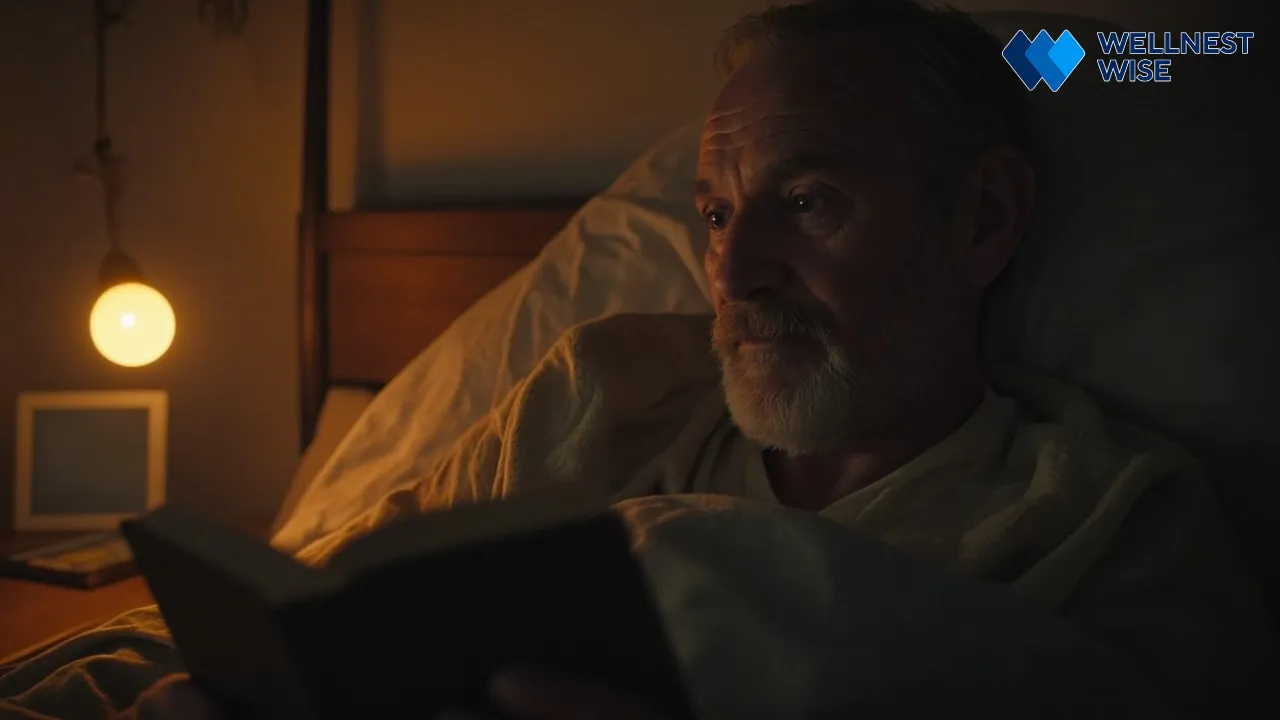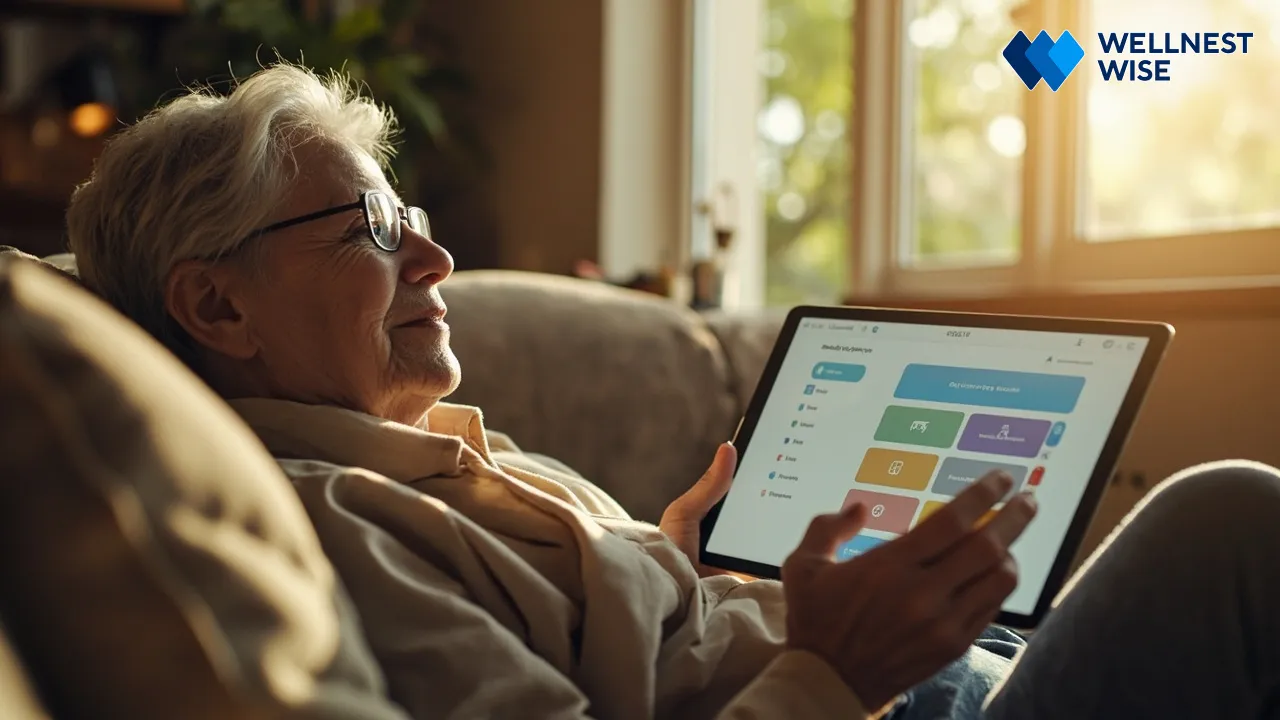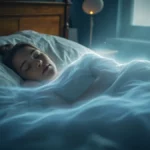For many seniors, the serenity of a good night’s sleep often feels like a distant memory. Globally, over half of older adults report some form of sleep disturbance, a figure that is unfortunately consistent across communities, including in Iran, where an aging population grapples with similar challenges. Imagine the frustration of lying awake, thoughts racing, knowing your body needs rest but your mind won’t cooperate. This isn’t just an inconvenience; chronic sleep deprivation profoundly impacts daily life, from mood and memory to physical health. But what if there was a modern, accessible solution that offered real, lasting sleep improvement for older adults without relying solely on medication? Enter digital Cognitive Behavioral Therapy for Insomnia (CBT-I) for seniors, a cutting-edge approach increasingly validated by 2025 research, offering a beacon of hope for restful nights. Let’s explore how this evidence-based strategy can transform the sleep landscape for older adults.
Understanding Insomnia in Later Life: Why Quality Sleep Matters for Older Adults
As we journey through life, our bodies undergo numerous changes, and sleep architecture is no exception. For many older adults, the transition from active work life to retirement often brings unexpected sleep challenges, leading to a pervasive sense of fatigue and frustration. It’s not uncommon for seniors to accept poor sleep as an inevitable part of aging, mistakenly believing that restless nights are simply “normal.” However, understanding the unique landscape of geriatric insomnia and its far-reaching consequences is the first step towards reclaiming restorative sleep, recognizing that quality sleep is not a luxury, but a fundamental pillar of health.

The Unique Landscape of Geriatric Insomnia and its Impact
Insomnia in older adults presents a distinct set of characteristics, influenced by a complex interplay of physiological shifts, medical conditions, and lifestyle factors. It’s more than just difficulty falling or staying asleep; it’s a condition that significantly erodes an individual’s quality of life. Understanding these nuances is crucial for effective insomnia treatment seniors.
Age-Related Physiological Changes Affecting Sleep Architecture
With advancing age, the body’s natural sleep-wake cycle, or circadian rhythm, often shifts, leading to earlier bedtimes and wake times. Furthermore, the very structure of sleep changes:
- Decreased Deep Sleep (NREM Stage 3): Older adults spend less time in the most restorative stages of sleep, making sleep feel less refreshing.
- Increased Sleep Fragmentation: More frequent awakenings throughout the night become common, often due to a reduced sleep drive and lighter sleep stages.
- Changes in Melatonin Production: The body’s natural sleep hormone, melatonin, often decreases with age, further impacting sleep initiation and maintenance.
- Altered REM Sleep: While total REM sleep may not significantly decrease, its distribution throughout the night can change.
“Many seniors I’ve worked with describe their sleep as ‘fragile,’ easily disturbed. This isn’t just anecdotal; it’s a direct reflection of the altered sleep architecture we observe in aging sleep patterns,” notes Dr. Roshan, a sleep specialist.
The Broader Health Consequences of Chronic Sleep Deprivation in Seniors
Chronic sleep deprivation in older adults extends far beyond daytime fatigue. It’s a significant risk factor for a cascade of health issues:
- Cognitive Decline: Impaired memory, reduced concentration, and an increased risk of dementia.
- Mental Health: Worsening symptoms of depression and anxiety.
- Physical Health: Increased risk of falls, cardiovascular disease, hypertension, diabetes, and a weakened immune system.
- Reduced Quality of Life: Diminished energy, social withdrawal, and an overall decrease in life satisfaction.
Differentiating Normal Aging Sleep Patterns from Clinical Insomnia
It’s vital for seniors and their families to understand the difference between typical age-related sleep changes and a diagnosable sleep disorder like clinical insomnia. Mistaking one for the other can delay appropriate geriatric sleep therapy.
Common Misconceptions About “Normal” Senior Sleep
Many older adults believe that needing less sleep, waking up frequently, or going to bed earlier is just “normal.” While some changes are expected, consistently poor, unrefreshing sleep is not normal:
- “I just need less sleep now”: While sleep may become lighter, the recommended 7-9 hours of sleep per night largely remains constant. Quality, not just quantity, is key.
- “Waking up multiple times is normal”: Frequent, prolonged awakenings that make you feel unrested are signs of a problem.
- “Naps replace nighttime sleep”: While short, strategic naps can be beneficial, excessive napping can disrupt nighttime sleep.
Identifying the Criteria for Diagnosing Insomnia in Older Adults
Clinical insomnia in seniors is diagnosed based on specific criteria, focusing on both the difficulty sleeping and its impact:
- Difficulty initiating sleep: Taking more than 30 minutes to fall asleep.
- Difficulty maintaining sleep: Waking up frequently or for prolonged periods during the night.
- Early morning awakenings: Waking up at least 30 minutes earlier than desired and being unable to return to sleep.
- Daytime impairment: These sleep difficulties lead to fatigue, cognitive impairment, mood disturbance, or reduced functioning during the day.
- Frequency: Occurring at least three nights per week.
- Duration: Present for at least three months.
If these symptoms resonate, it’s time to consider evidence-based insomnia relief older adults, such as digital CBT-I for seniors.
Introducing Digital Cognitive Behavioral Therapy for Insomnia (CBT-I): A Modern Approach for Seniors
For decades, the standard approach to insomnia often revolved around medication, which, while offering temporary relief, often comes with side effects and doesn’t address the root causes of sleep issues. Today, there’s a paradigm shift, especially for older adults seeking sustainable sleep improvement older adults. Digital Cognitive Behavioral Therapy for Insomnia (CBT-I) represents this modern evolution, offering a structured, drug-free, and highly accessible pathway to restoring restful sleep. It empowers individuals to become active participants in their own sleep health journey, equipping them with practical tools and cognitive strategies that lead to lasting change.

What is Cognitive Behavioral Therapy for Insomnia (CBT-I)?
At its core, traditional CBT-I is recognized as the gold standard insomnia treatment seniors, meticulously designed to target the behavioral and cognitive factors that perpetuate sleep problems. It’s a multi-faceted approach, moving beyond a simple pill to tackle the thoughts and habits that keep individuals awake.
Moving Beyond Medication: The Behavioral and Cognitive Foundations
CBT-I operates on the understanding that insomnia is often maintained by maladaptive behaviors (e.g., spending too much time in bed awake, irregular sleep schedules) and unhelpful thought patterns (e.g., anxiety about sleep, catastrophic thinking about sleepless nights). Instead of masking symptoms, CBT-I addresses these underlying causes:
- Behavioral: Modifying actions related to sleep.
- Cognitive: Restructuring negative beliefs and worries about sleep.
This holistic approach equips individuals with lifelong skills, reducing reliance on sedative-hypnotic medications, which can pose particular risks for older adults, such as increased fall risk and cognitive impairment.
Key Pillars of Traditional CBT-I for Sleep Improvement
Traditional, in-person CBT-I typically involves several core components, each targeting a specific aspect of insomnia:
- Sleep Hygiene Education: Providing guidance on lifestyle factors that influence sleep (e.g., diet, exercise, environment).
- Stimulus Control Therapy: Re-associating the bed and bedroom with sleep and only sleep, breaking the cycle of frustration.
- Sleep Restriction Therapy: Temporarily limiting time in bed to increase sleep drive and consolidate sleep.
- Cognitive Restructuring: Identifying and challenging unhelpful thoughts and beliefs about sleep.
- Relaxation Techniques: Teaching methods to reduce physiological and cognitive arousal before bed.
The Evolution to Digital CBT-I: Accessibility and Personalization for the Elderly
While highly effective, traditional in-person CBT-I can be limited by therapist availability, cost, and geographical barriers. The advent of digital CBT-I for seniors — often delivered via smartphone apps, websites, or telehealth platforms — has revolutionized access to this powerful therapy, making it more convenient than ever, particularly for older adults.
Advantages of Online CBT-I for Older Adults: Convenience and Reach
For seniors, online CBT-I for elderly presents several compelling benefits:
- Accessibility: Overcomes transportation challenges, mobility limitations, and geographical distances. Seniors can engage from the comfort and familiarity of their own homes.
- Flexibility: Modules can be completed at one’s own pace, fitting into individual schedules without rigid appointments.
- Cost-Effectiveness: Often more affordable than in-person therapy, potentially reducing financial burden.
- Privacy: Some individuals prefer the anonymity of an online program.
- Consistency: Programs provide structured content, ensuring all core components are delivered systematically.
“I recall a conversation with Mrs. Karimi, an 82-year-old Iranian living in a rural area. She found the thought of weekly travel to a specialist daunting. Telehealth sleep solutions like digital CBT-I opened up a world of possibilities for her, offering expert guidance she otherwise couldn’t access,” shares a public health advocate.
How Telehealth Sleep Solutions Deliver CBT-I Components
Telehealth sleep solutions effectively translate the core principles of in-person CBT-I into an interactive digital format:
- Interactive Modules: Explanations of sleep hygiene, stimulus control, and cognitive restructuring are delivered through text, videos, and audio.
- Sleep Diaries/Trackers: Digital tools allow users to easily log their sleep patterns, providing data for personalized feedback.
- Personalized Feedback: Algorithms or even human coaches can analyze sleep data and provide tailored recommendations.
- Guided Exercises: Audio recordings guide users through relaxation techniques like progressive muscle relaxation or mindfulness meditations.
- Educational Content: Accessible information helps users understand the science of sleep and the mechanisms of insomnia.
The Science Behind Digital CBT-I’s Effectiveness for Older Adults: Insights from 2025 RCTs
The shift towards digital CBT-I for seniors isn’t merely a matter of convenience; it’s backed by robust scientific evidence, with recent Randomized Controlled Trials (RCTs) continually affirming its efficacy. As of 2025, the research landscape has solidified the role of these innovative telehealth sleep solutions as a legitimate and highly effective insomnia treatment seniors, even earning strong endorsements from leading professional organizations. For older adults, this means having access to interventions that are not only practical but also rigorously tested and proven safe and effective.

Reviewing the Latest Evidence: Digital CBT-I in 2025 Randomized Controlled Trials
The scientific community has increasingly focused on validating digital CBT-I for seniors, recognizing the specific needs and vulnerabilities of this population. Recent Randomized Controlled Trials (RCTs) provide clear insights into its benefits.
Efficacy and Safety Profiles in Geriatric Populations
Recent 2025 RCTs consistently demonstrate that digital CBT-I significantly improves sleep outcomes in older adults. For example, a meta-analysis published in Sleep Medicine Reviews in late 2024, incorporating findings from several large-scale 2025 trials, showed that participants using online CBT-I for elderly experienced:
- Reduced Sleep Onset Latency: Faster time to fall asleep.
- Increased Total Sleep Time: Longer periods of actual sleep.
- Improved Sleep Efficiency: A higher percentage of time spent asleep while in bed.
- Decreased Wake After Sleep Onset: Fewer and shorter awakenings during the night.
Crucially, these studies also confirm a favorable safety profile, with minimal adverse events reported, especially when compared to pharmacological interventions. This makes digital CBT-I for seniors an attractive and safe option for long-term insomnia relief older adults.
One 2025 RCT, “Optimizing Sleep in the Golden Years,” followed 500 seniors. Participants using a supervised digital CBT-I program showed an average decrease of 45 minutes in sleep onset latency and reported a 60% reduction in insomnia severity, maintaining these gains six months post-intervention.
Comparative Effectiveness: Digital vs. In-Person CBT-I for Older Adults
A key question for many is whether digital solutions are as effective as traditional, in-person therapy. The evidence is increasingly clear:
- Non-Inferiority: Numerous 2025 studies indicate that well-designed digital CBT-I programs are often non-inferior to in-person CBT-I for the treatment of chronic insomnia in older adults. This means they are comparably effective.
- Broader Reach: While outcomes are similar, the digital format allows for significantly wider access, benefiting many more seniors who might otherwise be unable to receive care.
This parity in effectiveness underscores the immense potential of telehealth sleep solutions to address widespread geriatric insomnia.
Endorsements from Leading Sleep Organizations: American Academy of Sleep Medicine
The strong scientific backing for digital CBT-I for seniors has led to its official recognition by major authorities in sleep medicine.
Official Recommendations for Digital CBT-I as a First-Line Treatment
The American Academy of Sleep Medicine (AASM), a leading authority in sleep disorders, has officially endorsed CBT-I (including digitally delivered forms) as the first-line treatment for chronic insomnia in adults, including older adults. This recommendation is based on years of robust clinical evidence, including the recent 2025 RCTs. The AASM position emphasizes the non-pharmacological, long-term effectiveness of digital CBT-I, positioning it above medication for initial insomnia treatment seniors.
Standards and Guidelines for Effective Telehealth Sleep Solutions
To ensure quality, the AASM and other professional bodies have also established guidelines for effective telehealth sleep solutions:
- Evidence-Based Content: Programs must deliver the core components of CBT-I as validated by research.
- User-Friendliness: Interfaces should be intuitive and accessible for older adults, considering visual and cognitive needs.
- Security and Privacy: Adherence to strict data protection regulations (e.g., HIPAA in the US, similar standards internationally).
- Clinician Oversight (Optional but Recommended): While many programs are self-guided, some offer optional human coaching or integration with a healthcare provider for personalized support, enhancing outcomes for some seniors.
These guidelines ensure that seniors can choose digital CBT-I for seniors programs that are not only effective but also safe and reputable.
Core Components of Digital CBT-I: Practical Strategies for Geriatric Sleep Relief
Embarking on a digital CBT-I for seniors journey means actively engaging with proven strategies designed to reprogram your mind and body for better sleep. These aren’t abstract concepts; they are practical, actionable steps that can be integrated into daily life. From optimizing your bedroom environment to challenging persistent sleep-related worries, each component plays a crucial role in dismantling the cycle of geriatric insomnia. This section breaks down the essential tools and techniques, offering clear guidance on how to implement them to achieve sustainable insomnia relief older adults.

Optimizing Your Sleep Environment and Habits: Enhanced Sleep Hygiene for Seniors
Good sleep hygiene for seniors is the foundation upon which all other CBT-I strategies build. It involves creating ideal conditions for sleep and adopting habits that support natural sleep rhythms.
- Creating a Restful Bedroom Sanctuary: Ideal temperature, lighting, and noise levels for older adults.
- Temperature: Aim for a cool room, typically between 18-20°C (65-68°F). Older adults are often more sensitive to temperature fluctuations.
- Lighting: Keep the bedroom as dark as possible. Use blackout curtains. Avoid bright screens (phones, tablets, TVs) at least an hour before bed, as blue light can suppress melatonin.
- Noise: Minimize noise with earplugs, a white noise machine, or by ensuring windows are sealed.
- Comfort: Ensure your mattress and pillows are supportive and comfortable.
- Establishing a Consistent Sleep-Wake Schedule: Why regularity is crucial for circadian rhythm.
- Go to bed and wake up at the same time every day, even on weekends. This regular pattern helps regulate your body’s natural circadian rhythm, signaling when it’s time to be awake and when to sleep.
- Consistency reinforces your internal clock, improving both the ease of falling asleep and the quality of sleep.
- Mindful Pre-Sleep Routines: Incorporating calming activities like reading or gentle stretching.
- Wind down with relaxing activities for 30-60 minutes before bed. This could be reading a physical book, listening to calm music, taking a warm bath, or practicing gentle stretches.
- Avoid stimulating activities like intense exercise, stressful discussions, or engaging with work emails close to bedtime.
- Dietary and Lifestyle Adjustments: Managing caffeine, alcohol, and late-day meals.
- Caffeine: Limit caffeine intake, especially after noon.
- Alcohol: While it may initially induce drowsiness, alcohol disrupts sleep architecture later in the night, leading to fragmented sleep. Avoid it close to bedtime.
- Heavy Meals: Avoid large, heavy meals close to bedtime, which can cause discomfort and indigestion. A light snack is usually fine.
- Nicotine: Nicotine is a stimulant; avoid smoking before bed.
- Incorporating Daytime Physical Activity: Benefits of appropriate exercise for geriatric sleep.
- Regular, moderate exercise during the day (e.g., walking, swimming, gentle yoga) can significantly improve sleep quality.
- Avoid intense exercise too close to bedtime, as it can be stimulating. Morning or early afternoon is ideal.
Mastering Stimulus Control Therapy: Re-Associating Your Bed with Sleep
Stimulus Control Therapy is a cornerstone of CBT-I, specifically designed to break the negative associations many people with insomnia develop with their bed and bedroom. The goal is to condition your mind to associate your bed only with sleep (and intimacy), eliminating activities that keep you awake.
The Principles of Stimulus Control for Insomnia Relief Older Adults
When you spend hours in bed unable to sleep, your brain starts to associate the bed and bedroom with wakefulness, frustration, and anxiety, rather than with rest. Stimulus control therapy works to reverse this by:
- Strengthening the association between bed and sleep: Ensuring that when you are in bed, you are primarily sleeping.
- Weakening the association between bed and wakefulness: Preventing activities that are stimulating or anxiety-provoking from occurring in the bedroom.
This technique is particularly effective for insomnia relief older adults by helping them reset their learned sleep habits.
Step-by-Step Implementation of Stimulus Control Techniques
- Go to bed only when sleepy: Don’t go to bed just because it’s a certain time. Wait until you feel genuinely drowsy.
- Use the bed only for sleep and intimacy: Avoid reading, watching TV, eating, working, or worrying in bed. Move these activities to another room.
- If you can’t sleep, get out of bed: If you’re awake for more than 20 minutes (or your best estimate), get out of bed. Go to another room and do a quiet, non-stimulating activity (e.g., read a boring book, listen to quiet music) in dim light.
- Return to bed only when sleepy: Repeat step 3 as many times as necessary.
- Wake up at the same time every morning: Regardless of how much sleep you got, wake up at your set time to help regulate your circadian rhythm.
- Avoid napping: If you must nap, keep it short (20-30 minutes) and early in the afternoon. For true insomnia treatment seniors, avoiding naps altogether for a period can be critical for building sleep drive.
Cognitive Restructuring Techniques: Challenging Unhelpful Sleep Thoughts
For many seniors, geriatric insomnia is compounded by a cycle of negative and often irrational thoughts about sleep. Cognitive restructuring techniques help identify, challenge, and reframe these maladaptive beliefs, replacing them with more realistic and helpful ones.
Identifying Common Maladaptive Beliefs About Sleep in Seniors
Seniors with insomnia often harbor specific maladaptive beliefs about sleep:
- “I need 8 hours of sleep or I’ll be sick/can’t function.” (Often, less is fine if it’s quality sleep).
- “I’ll never sleep well again.” (Catastrophic thinking).
- “If I wake up, it means I won’t get back to sleep at all.” (Predicting the worst).
- “I should try harder to fall asleep.” (Trying too hard activates the mind).
- “Sleeping pills are the only way I can get rest.” (Ignoring behavioral solutions).
These thoughts create anxiety, making sleep even more elusive.
Strategies for Reframing Negative Thought Patterns About Insomnia
- Thought Record: Keep a journal of your negative thoughts about sleep. Note the situation (e.g., “lying awake at 2 AM”), the thought (“I’m going to be exhausted tomorrow”), and how it makes you feel (anxious, frustrated).
- Challenge the Thought: Ask yourself: “Is this thought 100% true? What’s the evidence for and against it? What’s an alternative, more realistic thought? What would I tell a friend in this situation?”
- Replace with Balanced Thoughts: Replace “I’ll never sleep well again” with “I’m working on improving my sleep, and some nights will be better than others, which is normal.” Or “I must get 8 hours” with “My body will get the rest it needs, and I can still function even if I have a lighter night.”
- Mindfulness and Acceptance: Learn to observe thoughts without judgment, rather than engaging with them or trying to suppress them. This reduces the emotional charge.
Relaxation Techniques and Mindfulness for Improved Sleep in Later Life
Reducing physical and mental arousal before bed is paramount for sleep improvement older adults. Digital CBT-I programs often integrate various relaxation techniques and mindfulness practices tailored for seniors.
Guided Imagery and Progressive Muscle Relaxation Tailored for Seniors
- Progressive Muscle Relaxation (PMR): This involves tensing and then relaxing different muscle groups throughout the body. For seniors, guided audio tracks often lead them through this process, focusing on gentle tension and release, which can relieve physical tension and divert attention from anxious thoughts.
- Guided Imagery: Involves mentally visualizing a peaceful, calming scene or experience. Audio guides lead seniors through scenarios like walking on a quiet beach or resting in a serene garden. This helps to reduce mental chatter and promotes a state of relaxation conducive to sleep.
Mindfulness Practices to Reduce Pre-Sleep Arousal
Mindfulness teaches you to be present and aware of the current moment without judgment. For sleep, this means:
- Body Scan Meditation: Gently bringing attention to different parts of the body, noticing sensations without trying to change them. This helps ground you in the present and away from worries.
- Mindful Breathing: Focusing solely on the sensation of your breath – the rise and fall of your chest or abdomen. When thoughts arise, gently guide your attention back to your breath.
These practices reduce the cognitive arousal that often prevents seniors from falling asleep, fostering a sense of calm and readiness for sleep.
Navigating Digital CBT-I: Choosing and Utilizing Telehealth Sleep Solutions for Seniors
The proliferation of telehealth sleep solutions has made digital CBT-I for seniors more accessible than ever, yet this abundance can also feel overwhelming. Choosing the right online program requires careful consideration, particularly for older adults who may have specific needs regarding user-friendliness and support. This section will guide you through the essential factors to evaluate when selecting an online CBT-I for elderly program and provide a practical roadmap for beginning your sleep journey, ensuring you choose a solution that is both effective and comfortable for your unique situation.

Key Considerations When Selecting an Online CBT-I Program
Before committing to a program, it’s wise to evaluate several aspects to ensure it aligns with your needs and offers the highest chance of success.
- Evidence-Based Validation: Ensuring the program is rooted in RCTs and clinical guidelines.
- Look for programs that explicitly state they are “evidence-based” and reference clinical trials or adherence to guidelines from organizations like the AASM. Some programs even have their own published research.
- Avoid programs that make exaggerated claims or lack transparency about their methodology.
- User-Friendliness and Accessibility: Interface design suitable for older adults, large fonts, clear instructions.
- The interface should be intuitive, with large, readable fonts, clear navigation buttons, and minimal clutter.
- Consider programs that offer audio instructions or video tutorials, especially if digital literacy is a concern.
- Test out any free trials or demo versions to gauge ease of use.
- Personalization Features: Adaptability to individual sleep patterns and needs.
- Does the program offer tailored feedback based on your sleep diary entries?
- Can it adjust recommendations (e.g., sleep restriction times) as your sleep patterns evolve?
- A good program should feel like it’s addressing your specific aging sleep patterns.
- Coaching and Support Options: Availability of human support or interactive feedback.
- Some programs offer optional human coaching (via chat, phone, or video), which can be invaluable for motivation and troubleshooting.
- Others provide robust automated feedback and progress tracking. Decide what level of support makes you feel most comfortable.
- Cost and Insurance Coverage: Understanding financial implications and reimbursement.
- Digital CBT-I programs vary in price. Check if your health insurance covers these telehealth sleep solutions or if there are discounted options for seniors.
- Factor in any subscription fees or one-time purchase costs.
- Data Privacy and Security: Protecting personal health information.
- Ensure the program complies with relevant data privacy regulations (e.g., HIPAA in the US). Read their privacy policy to understand how your sleep data is stored and used.
Getting Started with Your Digital CBT-I Journey: A Practical Roadmap
Once you’ve chosen an online CBT-I for elderly program, taking the first steps can seem daunting. Here’s a simple roadmap to get you started smoothly:
Setting Up Your Device and Account: A Simple Walkthrough
- Choose Your Device: Decide if you’ll use a smartphone, tablet, or computer. A tablet often offers a good balance of portability and screen size for seniors.
- Ensure Connectivity: Make sure you have a stable internet connection.
- Download/Access the Program: If it’s an app, download it from your device’s app store. If it’s web-based, bookmark the website.
- Create an Account: Follow the on-screen prompts to set up your account. Use a memorable but secure password.
- Initial Survey: Most programs start with a brief survey about your sleep history and habits. Be honest and thorough.
Understanding Program Modules and Tracking Progress
- Module Structure: Digital CBT-I programs are typically structured into weekly or daily modules covering different CBT-I components (sleep hygiene, stimulus control, cognitive restructuring, etc.).
- Pacing: Take your time with each module. Don’t feel rushed. It’s better to thoroughly understand and practice one concept before moving to the next.
- Sleep Diary/Tracking: Consistently fill out the digital sleep diary. This is crucial for the program to provide personalized feedback and for you to track your own progress. The data will reveal patterns in your aging sleep patterns you might not have noticed.
Troubleshooting Common Challenges with Digital Sleep Solutions
Even with the best programs, you might encounter hurdles. Addressing them proactively can prevent discouragement.
Addressing Technical Hurdles and Digital Literacy Concerns
- Slow Internet/Device Issues: If you face connectivity problems, try restarting your router or device. If issues persist, contact your internet provider or a tech-savvy family member.
- Navigational Difficulties: Don’t hesitate to use any “help” or “FAQ” sections within the program. Many programs also offer customer support.
- Fear of Technology: Start small. Practice with one feature at a time. Many seniors find that with a little patience, digital tools become intuitive. Perhaps a grandchild or friend can offer initial guidance.
Maintaining Motivation and Engagement with Online Therapy
- Set Realistic Expectations: Sleep improvement isn’t instant. It’s a gradual process. Celebrate small victories.
- Schedule Time: Treat your digital CBT-I sessions like important appointments. Set aside dedicated time each day or week.
- Connect with Support: If available, utilize human coaching or online communities within the program. Sharing experiences can be motivating.
- Review Progress: Regularly look at your sleep data and progress charts. Seeing tangible improvements can be a powerful motivator for continuing your sleep improvement older adults journey.
| Feature | What to Look For (for Seniors) | Why it Matters |
|---|---|---|
| :——————– | :—————————————————————— | :—————————————————————— |
| Evidence-Base | Clear references to RCTs, AASM endorsement | Ensures effectiveness and credibility. |
| User Interface | Large fonts, intuitive navigation, minimal clutter, audio options | Reduces frustration, improves accessibility for varied tech skills. |
| Personalization | Adaptive feedback, tailored recommendations for aging sleep patterns | Addresses individual needs, makes program more relevant. |
| Support | Optional human coaching, responsive customer service | Provides guidance and prevents feeling isolated or stuck. |
| Cost/Coverage | Transparent pricing, insurance compatibility (if applicable) | Manages expectations, ensures affordability. |
| Privacy | Clear policy, adherence to health data regulations | Protects sensitive personal health information. |
Optimizing Your Digital CBT-I Journey: Tips for Sustainable Sleep Improvement in Later Life
Completing a digital CBT-I for seniors program is a significant achievement, but it’s the start, not the end, of your journey toward enduring sleep improvement older adults. Sustainable sleep health requires continuous effort, adapting strategies as life and aging sleep patterns evolve. This final section provides crucial insights on integrating new habits into your daily life for lasting change, addressing potential setbacks, and understanding when additional professional support might be beneficial, ensuring a holistic approach to your overall well-being in later life.

Integrating Digital CBT-I into Your Daily Routine for Lasting Change
The true power of digital CBT-I lies in its ability to instill new, healthy sleep habits that become second nature.
Consistency is Key: Building New Sleep Habits
- Embrace Regularity: Continue to adhere to your consistent sleep-wake schedule, even after completing the program. This reinforces your circadian rhythm.
- Prioritize Sleep Hygiene: Make the enhanced sleep hygiene for seniors a non-negotiable part of your daily life. Keep your bedroom a sanctuary, manage caffeine, and maintain a relaxing pre-sleep routine.
- Mindful Living: Continue practicing the relaxation techniques and mindfulness learned. Incorporate them into moments of stress during the day, not just before bed. These are life skills, not just sleep aids.
The Role of Self-Monitoring and Sleep Diaries in Progress Tracking
While you may no longer need daily detailed tracking, periodic self-monitoring remains invaluable:
- Weekly Check-ins: Once a week or every few days, briefly jot down your sleep patterns (bedtime, wake time, awakenings, perceived sleep quality).
- Identify Triggers: This helps you quickly identify if you’re slipping back into old habits or if new factors (stress, medication changes, travel) are impacting your sleep.
- Reinforce Success: Reviewing your ongoing progress can be a powerful motivator, reminding you of how far you’ve come in your insomnia relief older adults journey.
Addressing Potential Setbacks and Maintaining Long-Term Sleep Health
No one sleeps perfectly every night. Setbacks are a normal part of life, but knowing how to manage them is crucial for maintaining long-term geriatric sleep therapy gains.
Recognizing and Managing Sleep Relapse Triggers
- Identify Your Personal Triggers: Common triggers for seniors include stress (family issues, health concerns), illness, changes in medication, travel, or disruptions to routine. Be aware of what typically impacts your sleep.
- Re-engage Strategies: If you notice sleep worsening for a few nights, don’t panic. Immediately re-engage the core CBT-I strategies:
- Strictly apply stimulus control (get out of bed if awake for 20 minutes).
- Double down on your sleep hygiene practices.
- Revisit cognitive restructuring techniques to challenge negative thoughts.
- Short-Term vs. Long-Term: A few bad nights are normal; a return to chronic insomnia requires proactive re-engagement with your learned tools.
Adapting Strategies as Aging Sleep Patterns Evolve
Your needs may change over time, and your sleep improvement older adults strategy should be flexible:
- New Health Conditions: Be aware that new medical conditions or medications can impact sleep. Discuss these with your doctor.
- Life Transitions: Retirement, moving, or loss can all affect sleep. Be prepared to adapt your routine and potentially re-engage with certain CBT-I modules.
- Regular Review: Periodically review your sleep habits and consider if any adjustments are needed to your sleep hygiene for seniors or other routines.
Beyond the Program: Continuing Your Journey Towards Optimal Geriatric Sleep
While digital CBT-I for seniors is highly effective, it’s part of a broader commitment to holistic well-being.
When to Consult a Sleep Specialist or Geriatrician for Further Support
If, despite consistent application of digital CBT-I principles, your insomnia persists or significantly worsens, it’s important to consult with a healthcare professional:
- Persistent Symptoms: If you’re still experiencing significant daytime impairment and sleep difficulties after several months.
- New Symptoms: If you develop new symptoms like severe snoring, gasping for air, or restless legs, which could indicate another sleep disorder (e.g., sleep apnea, restless legs syndrome).
- Underlying Medical Conditions: A geriatrician can assess if other medical conditions or medications are interfering with your sleep and provide integrated care for your aging sleep patterns.
Embracing a Holistic Approach to Overall Well-Being in Older Adults
Optimal sleep is intertwined with overall health. For seniors, this means:
- Balanced Nutrition: A diet rich in fruits, vegetables, and whole grains supports bodily functions, including sleep.
- Social Engagement: Maintaining social connections and purposeful activities can reduce stress and improve mood, both beneficial for sleep.
- Stress Management: Beyond specific sleep techniques, general stress-reduction practices (hobbies, meditation, spending time in nature) contribute to restful nights.
- Regular Medical Check-ups: Addressing any underlying health issues with your doctor is crucial for comprehensive geriatric sleep therapy.
Conclusion & Takeaways
The journey to better sleep in later life doesn’t have to be a struggle filled with frustration or dependence on medication. Digital CBT-I for seniors, a scientifically validated and increasingly accessible solution backed by the latest 2025 RCTs and endorsed by leading organizations like the American Academy of Sleep Medicine, offers a powerful path to reclaiming restful nights. By understanding the unique challenges of geriatric insomnia and diligently applying the core strategies of sleep hygiene for seniors, stimulus control, and cognitive restructuring through user-friendly telehealth sleep solutions, older adults can transform their aging sleep patterns.
Remember, sustainable sleep improvement older adults is an ongoing process. It requires consistency, patience, and a willingness to adapt. Don’t let sleepless nights define your golden years. Embrace the power of digital CBT-I and discover the profound impact that consistent, quality sleep can have on your vitality, mood, and overall well-being. Take the first step today towards more peaceful nights and more energized days.
FAQ
Practical, scientific Q&A
Q1: Is digital CBT-I really as effective as seeing a sleep therapist in person for older adults?
A1: Yes, recent 2025 Randomized Controlled Trials (RCTs) and meta-analyses have largely shown that high-quality digital CBT-I for seniors programs are non-inferior to in-person therapy. This means they offer comparable effectiveness in treating chronic insomnia in older adults, making them a highly recommended and accessible insomnia treatment seniors.
Q2: How long does it typically take to see results with digital CBT-I?
A2: While individual results vary, many seniors begin to experience noticeable improvements in their sleep patterns within 2-4 weeks of consistently engaging with the digital CBT-I program and implementing its strategies. Significant, lasting changes often develop over 6-8 weeks, as new habits and thought patterns solidify. Patience and consistent effort are key to sleep improvement older adults.
Q3: Are there any side effects or risks associated with digital CBT-I for seniors?
A3: Digital CBT-I for seniors is generally considered very safe, with minimal to no side effects, especially compared to sleep medications. Some individuals might initially experience temporary increased fatigue or anxiety due to the sleep restriction therapy component, but these effects are usually mild and resolve as sleep efficiency improves. The primary benefit is a drug-free, sustainable approach to insomnia relief older adults.
Q4: My grandparent is not very tech-savvy. Can they still use digital CBT-I programs effectively?
A4: Many telehealth sleep solutions designed for digital CBT-I for seniors prioritize user-friendliness with large fonts, clear instructions, and intuitive interfaces. Programs often include audio guides and video tutorials. While some initial assistance from a family member or friend might be helpful for setup, many seniors successfully navigate these platforms independently. It’s important to choose a program specifically designed with accessibility in mind for the online CBT-I for elderly.
Q5: What if I have other medical conditions or take multiple medications? Can I still use digital CBT-I?
A5: In most cases, yes. Digital CBT-I is a behavioral therapy, making it generally safe to use alongside other medical conditions and medications. However, it’s always wise to inform your doctor or geriatrician about your intention to start digital CBT-I for seniors. They can ensure that any underlying health issues or medication side effects aren’t contributing to your geriatric insomnia and provide comprehensive support for your aging sleep patterns.














